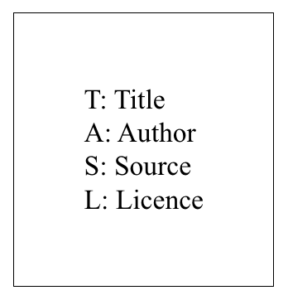This post provides some basic guidelines around citation and attribution when creating and adapting open educational resources (OER). If you are not sure what the difference between these two things is, start by reading the following section from the Self-Publishing Guide: Citation vs. Attribution.
Excerpt from Getting Started: OER Publishing at BCcampus by the OER Production Team
Citation
As you would with any academic writing, you should cite your sources throughout the resource. This means providing in-line citations or footnotes and some type of reference list. The citation style you use is up to you, as long as it is consistent. Generally, people use APA or Chicago style.
Resources:
- MLA Style Center (see “Citing Sources” in the top menu)
- APA Style and Grammar Guidelines (see “in-text citations” and “references”)
- Cite Indigenous Elders and Knowledge Keepers in APA Style
Attribution

If you are creating an OER that includes openly licensed content created by other people (whether that be text, images, or videos), you must attribute (give credit to) the original creator. This is a minimum requirement for materials licensed under a Creative Commons licence. See the post on Licences and Permissions for more information.
When attributing the creator, you should remember the acronym TASL, which stands for Title, Author, Source, and Licence. These are the four things you need to include in an attribution statement.
Here is an example:

“Small bouquet of purple flowers” by Marco Verch is licensed under a CC BY 2.0 licence.
In this example, the attribution statement includes the title of the image, the photographer, and the licence. In addition, it links to the source of the photo, the photographer’s page, and information about the licence.
What if I adapt (make changes to) the resource?
If you edit an openly licensed resource, you should include that in your attribution statement. This can look like a brief description of what the change was and who made the change. Here are some examples:
Text Attribution Example
- Text under the “What Are Your Learning Preferences” and “VARK Learning Styles” headings is from “How You Learn” in University Success by N. Mahoney, B. Klassen, and M. D’Eon. Adapted by Mary Shier. Licensed under a CC BY-NC-SA 4.0 licence.
Media Attributions Example
- “Small bouquet of purple flowers” by Marco Verch is licensed under a CC BY 2.0 licence. Cropped by Josie Gray.
- “Introduction to Open Educational Resources” by Abbey Elder and adapted by Josie Gray is licensed under a CC BY 4.0 licence. In this adapted version, two slides were replaced with Canadian-specific content and sections were removed that were not relevant to the context of this project.
Do I need to attribute my original content?
Usually, no. However, if you are using a mix of your own content and content from others (for example, using some of your own images) attributing your content will help make it clear to those who adopt and adapt the resource in the future who created what materials.
Do I need to attribute public domain or CC0 content?
Attribution is not legally required for public domain and CC0 content; however, we still recommend that you attribute this content.
This will help make it clear to those who adopt and adapt the resource in the future who created what materials and what they are allowed to do with them. In addition, giving people credit for their work is good practice, even when not required.
Track all attribution information
When using and adapting openly licensed and public domain content from multiple sources, it is really important to keep track of what content is coming from where and the kinds of changes you are making so you can properly attribute everyone whose work you are drawing on. This is really hard to figure out later, so tracking this information from the beginning will make it easier in the long run.
Here is a template you can use to track this information: Attribution Tracking Template [Excel]
